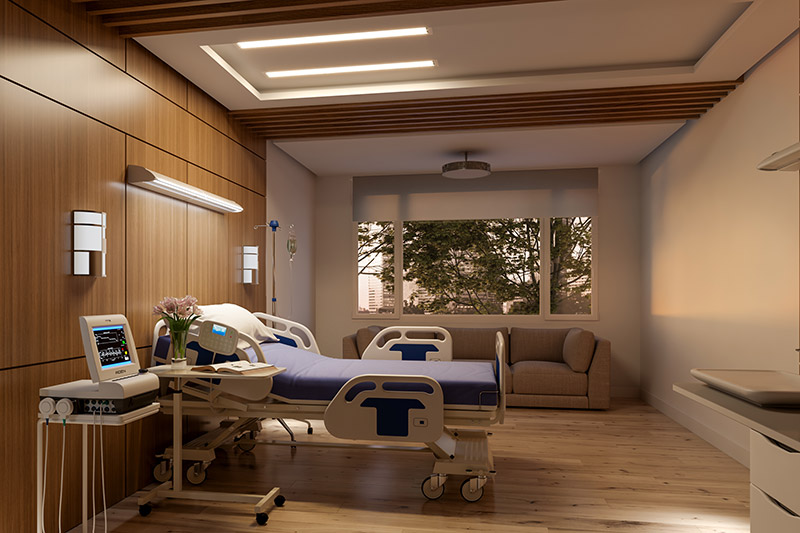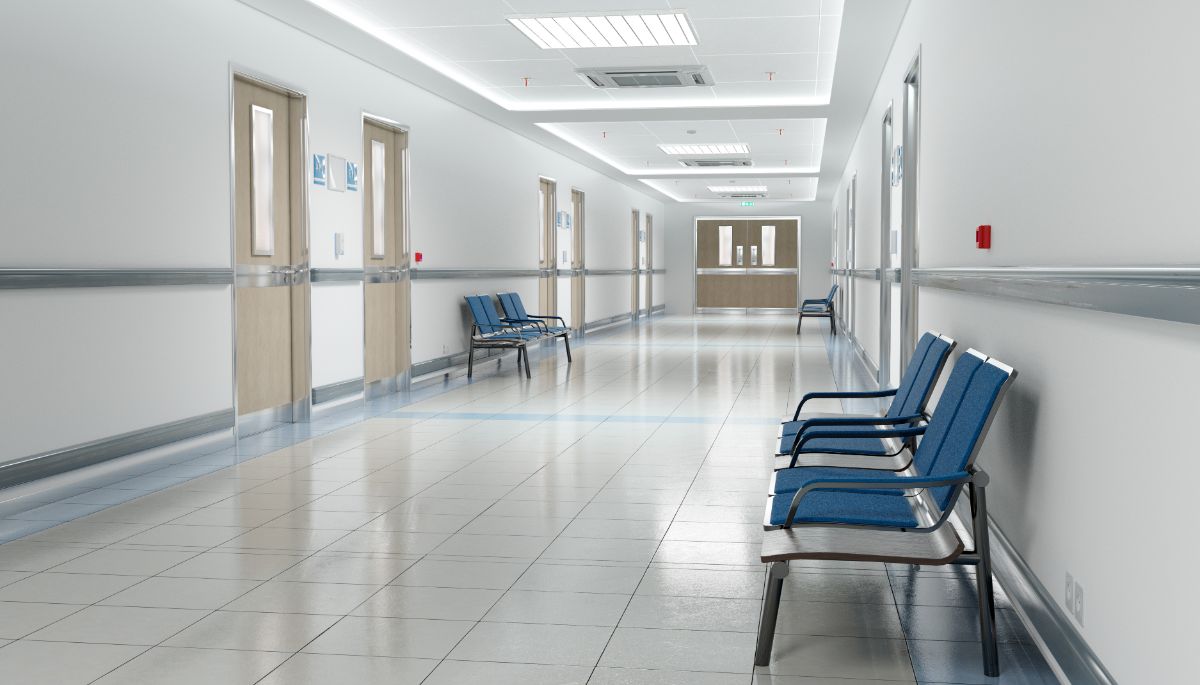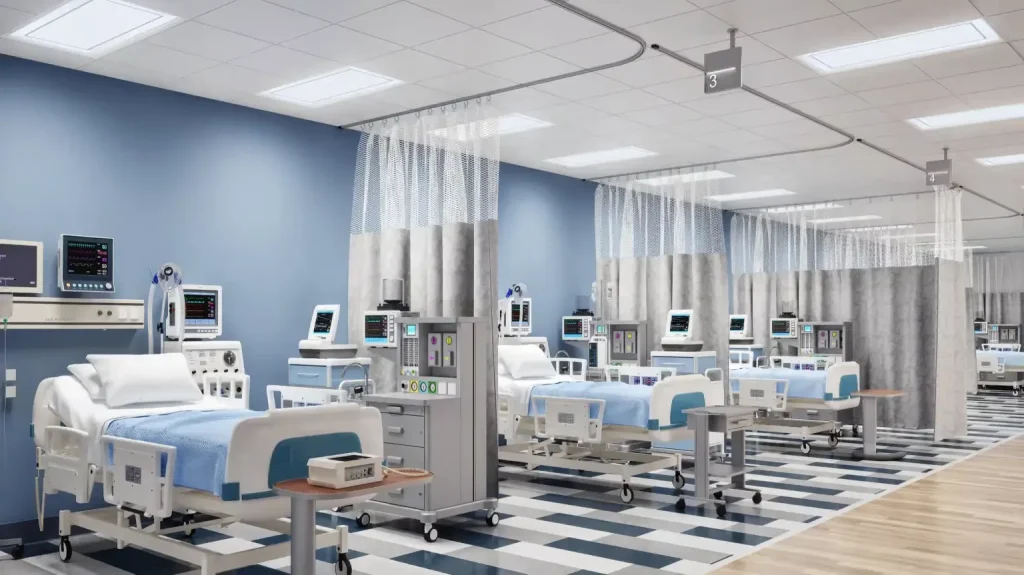Did you know that Hospital Lighting Mistakes could be silently undermining patient recovery, staff performance, and overall efficiency in your facility? Lighting in hospitals is far more than just brightness it’s a crucial factor that shapes the healing environment, enhances medical accuracy, and supports staff focus.
The right design can reduce medical errors and improve outcomes, yet many healthcare facilities fall into costly lighting pitfalls without even realizing it. In this article, we’ll reveal the 7 most common hospital lighting mistakes and how to avoid them. Keep reading to discover how simple changes in lighting can dramatically transform patient care and boost workplace efficiency.
7 Critical Hospital Lighting Mistakes
Proper lighting in hospitals is essential for both patient well-being and staff performance. Unfortunately, many healthcare facilities overlook key aspects of lighting design, leading to costly mistakes that can hinder recovery and efficiency.
1- Poor Lighting Layering
Proper lighting in healthcare settings requires more than just overhead lights. Relying solely on a single light source can create uncomfortable or inefficient environments for both patients and staff. Effective lighting design involves layering different types of light to address the specific needs of each area.
Solution:
- Implement a three-layer approach, including ambient, task, and accent lighting.
- Combine ceiling lights with wall-mounted and directional lighting for better control and flexibility.
- Ensure that lighting is strategically placed for different functions within each space.
Example:
Patient rooms benefit from reading lights and night lights, offering flexibility for both the patient and healthcare providers. This multi-layer approach ensures a well-lit and comfortable environment for all activities.
2- Inadequate Color Temperature Selection
Choosing the wrong color temperature can greatly affect both the mood and functionality of a hospital. Using the same color temperature across all areas often leads to a clinical, uncomfortable environment, which may hinder patient recovery or staff focus.
Solution:
- Use 3000-3500K lighting for patient areas, providing a warm and comfortable atmosphere that supports healing.
- For examination and treatment areas, opt for 4000-5000K lighting to create a clinical and alert environment.
- Different color temperatures should be used in different zones to support their specific functions.
Example:
Operating rooms require bright, alert lighting (4000-5000K), while recovery rooms should use warmer lighting (3000-3500K) to help patients relax and recover.
3- Insufficient Task Lighting
In critical work areas such as operating rooms and nurse stations, inadequate task lighting can cause shadows that interfere with precise tasks, potentially leading to errors and inefficiencies.
Solution:
- Install shadowless surgical lights that provide consistent illumination during medical procedures.
- Use adjustable examination lights to ensure the right level of brightness at all times, allowing staff to work with precision.
- Ensure that workstations and critical care areas are properly lit to enhance visibility and reduce fatigue.
Example:
Nurse stations equipped with articulated arm lights offer adjustable lighting, making it easier to manage tasks and enhance accuracy.
4- Glare and Flicker Issues
Glare and flickering lights cause discomfort and eye strain, particularly in environments where precision and focus are crucial. These issues can negatively affect the health of both patients and staff, disrupting their comfort and productivity.
Solution:
- Use matte finishes and proper shielding to reduce glare and eliminate flickering.
- Invest in high-frequency electronic ballasts that provide stable and consistent lighting.
- Choose lights that maintain high quality and reduce visual strain.
Example:
Anti-glare lighting in patient rooms and hallways reduces eye strain for both patients and staff, ensuring a more comfortable and productive environment.
5- Neglecting Circadian Lighting
Circadian rhythms play a vital role in regulating sleep and recovery. Hospitals that neglect to incorporate circadian-friendly lighting can disrupt patients’ natural sleep-wake cycles, prolonging recovery times and diminishing overall well-being.
Solution:
- Implement dynamic lighting systems that mimic natural daylight, supporting the body’s internal clock.
- Use amber-toned night lights to create a calming environment conducive to sleep.
- Ensure that lighting in critical care units is designed to support both wakefulness during the day and restfulness at night.
Example:
ICU lighting programs that change throughout the day to reflect natural light patterns help maintain the circadian rhythm, improving both recovery and patient satisfaction.
6- Poor Emergency Lighting
In emergency situations, proper lighting is essential for safety and quick evacuation. Hospitals that fail to maintain effective emergency lighting systems could be putting lives at risk during critical moments.
Solution:
- Ensure that emergency lighting circuits are compliant with local regulations.
- Conduct regular testing and maintenance of backup lighting systems.
- Provide clear illumination along exit paths to guide people safely out during emergencies.
Example:
Exit path illumination standards, backed by regular testing, ensure that the hospital’s emergency lighting system functions effectively when it’s needed most.
7- Ignoring Energy Efficiency
Hospitals often have high energy demands, and ignoring energy efficiency in lighting design can lead to unnecessarily high operational costs. Additionally, poor energy management negatively impacts sustainability efforts.
Solution:
- Retrofit existing systems with energy-efficient LED lighting to reduce power consumption.
- Install motion sensors in low-traffic areas to automatically adjust lighting based on usage.
- Opt for lighting solutions that promote long-term cost savings and environmental sustainability.
Example:
Automated lighting in parking garages, driven by motion sensors, ensures that energy is only used when necessary, significantly lowering electricity costs.
In summary, the seven critical hospital lighting mistakes ranging from poor lighting layering to ignoring energy efficiency—can significantly impact patient recovery, staff performance, and overall hospital operations.
Proper lighting design not only enhances the comfort and functionality of healthcare spaces but also plays a crucial role in achieving better health outcomes.
To avoid these common pitfalls and ensure your facility benefits from optimal illumination, we highly recommend consulting with healthcare lighting specialists. Let Esco Lights guide you in creating a lighting environment that promotes healing and efficiency.
Contact Esco Lights today to explore customized lighting solutions that meet the unique needs of your healthcare facility!





